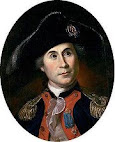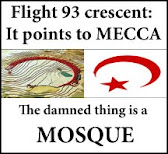A great story about a beautiful flag from the Civil War. This story would not matter had it been about a group of soldiers from the North or South. Either way, it is very cool and really an article that needs to shared and read. While some of you may recall that I loved the South when studying the Civil War, please note that it was not because the south wanted to keep slavery. It was about the underdog South, the excellent caliber, quality of leadership and the fighting spirit of Confederacy. The South was outnumbered, outgunned and out industrialized.
This flag is quite stunning. The story of the flag's history and restoration is very interesting. The time a project like this takes, the meticulous nature of the work is obviously a work of love for history. It is an honor to the Caroline Greys. "A remarkable banner, it bore a painting of the Confederate unit in fancy dress uniforms, exquisitely rendered on the dark blue fabric. It was grand, and refined, and captured the innocence of prewar pageantry."
********************************************************************************************
A band of brothers, renewed in a flag
By Michael E. Ruane / The Washington Post
In the summer of 1862 the men of Virginia’s Caroline Greys, having suffered the rigors of the first year of the Civil War, realized that their elegant silk flag was much too fine for the campfire and battlefield.
A remarkable banner, it bore a painting of the Confederate unit in fancy dress uniforms, exquisitely rendered on the dark blue fabric. It was grand, and refined, and captured the innocence of prewar pageantry.
So that July it was left for safekeeping at Richmond’s new Spotswood Hotel. If the Greys, organized in Caroline County, Va., didn’t survive the war, perhaps their flag might.
Over the next three years, the outfit was devoured in battle at places like Antietam, Drewry’s Bluff and Dindwiddie Court House. Only 11 men were left to surrender at Appomattox.
Their flag fared better, as they had hoped. But it, too, was eventually defeated, by the relentless assaults of time.
Last week, after a campaign waged with tweezers, tiny erasers and a humidifying gun, Richmond’s Museum of the Confederacy returned the once-tattered flag to display for the first time in 35 years.
In so doing, conservators preserved one of the most striking banners to survive the war and resurrected the Greys, who march again as they did in 1861, watched over by a smiling angel painted on silk.
The conservation also uncovered a forgotten mystery of the flag — a strangely altered numeral — and the signature of the flag maker, George Ruskell, which had been obscured by 150 years of grime.
“We had an idea that it was really a special and unique flag,” museum curator Catherine Wright said. “But it wasn’t until it was at the conservator and they went through the process of flattening and straightening it” that its real beauty was revealed.
The flag is 4 feet by 5 feet, trimmed in gold fringe. On the front, or obverse, side, is the painted Virginia state seal of a female warrior, the symbol of virtue, standing over a fallen tyrant whose crown has toppled off.
The reverse side shows 36 men, most dressed in dark gray uniforms with gold buttons, white belts and military caps topped with red pompons. Many faces appear somewhat distinct, and curators wonder if some might be miniature portraits.
The group is being led by two musicians in red jackets and light blue pants and a bearded man with a sword and epaulets who is clearly their commander.
Curators noted that the bearded figure resembles a photograph of the unit’s early commander, Robert Peatross.
Beneath a green ribbon that reads “Presented by the Ladies” in gold letters, the angel, reclining on a cloud, gazes down at the soldiers.
Underneath the portrait, a painted red ribbon reads “To the Caroline Greys, May, 1861.”
Over the years, curators said, the paint on the flag had deteriorated, shrinking and curling and tearing holes in the center so that both sides looked like a jumbled jigsaw puzzle.
Its condition was so bad that the flag had never been displayed in the museum’s new building, which opened in 1976, Wright said.
Few men survived
The Caroline Greys, later Company E of the 30th Virginia Infantry Regiment, got its flag on April 27, 1861, two weeks after the war began, according to a story a few days later in a Richmond newspaper.
About 70 men were in the company, according to the report, which was filed from Ruther Glen, a hamlet north of Richmond that still feels much as it probably did in 1861.
The Greys began as a militia group; it was formed Dec. 12, 1859, in response to the abolitionist John Brown’s attempt to spark a slave insurrection at Harpers Ferry, W.Va., two months before, the museum said.
Peatross was one of three members of his clan to join up.
The Mason brothers, Camillus, 23, a teacher, and Francis, 19, a student, also joined. Their father was a farmer who lived in a place nearby called White Chimneys, according to census records and a history of the 30th Virginia by Robert Krick.
Camillus was killed at the Battle of Antietam on Sept. 17, 1862. Francis was wounded there and sent home; he died in his father’s house two weeks later.
The Turner brothers of Ruther Glen — George, 22, William, 21, and Joshua, 18 e_SDHp— all joined the company on the same day in 1861. Joshua died of disease a few months later. William was killed at Antietam, where George was wounded.
Antietam, one of the war’s bloodiest battles, also claimed the Greys’ Thomas Blunt, a carpenter who was 25 at enlistment; Albert Dimue, 19; Louis Goldsby, 21; and Edwin Jackson, 25.
“Very few of the young men who left here came home,” said Susan Sili, a Caroline County historian.
Reassembling history
When the battered flag was delivered last year to Textile Preservation Associates in Ranson, W.Va., company President Cathy Heffner rejoiced.
Heffner, a veteran flag conservator, realized that despite the flag’s dreadful condition, almost all the pieces of the crumbled painting were there — twisted, curled and fragmented, but present on pieces of the flag silk.
All she had to do was “relax” the fragments with a humidifier, flatten them, and put the pieces back together like a puzzle.
“I could tell by the amount of folding and creasing that these pieces were going to open up and that there was going to be a substantial amount of flag left,” she said. “I was really excited.”
Once reassembled, the flag was sent for cleaning to Art Care Associates, of Frederick, Md., and painting conservator Nancy Pollak.
Using tweezers and a small eraser, she began meticulously cleaning each fragment, and then painting, with water colors, small paper patches to fill the few gaps.
In the process she discovered Ruskell’s name under the grime, which prompted a debate as to whether he was the painter, the flag maker or both.
She also stumbled upon the mysterious altered numeral. On the front of the flag, which bears the motto, “Presented to the Caroline Greys, May, 1860,” Pollak noticed that the zero in 1860 had originally been a 1, as in 1861.
The 1 had been switched to change the front date to 1860, while the date on the reverse side remained 1861.
Why?
County historian Sili believes she knows: The Greys “wanted to make it clear that they had been ready to fight a year beforehand.”
Unaware of the suffering that was ahead, she said, “they were pretty hot to fight.”
Original article is here.
ir a principal |
Ir a lateral


Contributors: Editor: AJ
Will work for cookies!
Staff: ambisinistral - Ozark Guru - PatriotUSA - Gary Fouse - HermitLion - Nick McAvelly
Twitter

Robert E. Lee at Chancellorsville


Nathan Bedford Forrest

The Cartoon that
started it all

This site is dedicated to threats faced by America and the free world. Freedom and liberty are being attacked from all sides. and, a battle has once again surfaced against a very old enemy, Islam, Islamofascism, tyranny, and the regressive progressive statist. Our work is dedicated to patriots who will stand up for freedom and liberty based on the Constitution of the United States. We will defend to the death, your right to your opinion. The Founding Fathers had it mostly right!

Eternal flame 9-11-2001




Comments by contributors or sources do not necessarily reflect the position of Patriot's Corner, other Contributors or the Editors. Fair Use: This site/blog may contain copyrighted material the use of which has not been specifically authorized by the copyright owner. Such material is made available to advance understanding of political, human rights, economic, democracy, and social justice issues, etc. This constitutes a 'fair use' of such copyrighted material as provided for in section Title 17 U.S.C. Section 107 of the US Copyright Law. Per said section, the material on this site/blog is distributed without profit to readers to view for the expressed purpose of viewing the included information for research, educational, or satirical purposes. Any person/entity seeking to use copyrighted material on this site/blog for purposes that go beyond "fair use," must obtain permission from the copyright owner.


Contributors: Editor: AJ

Will work for cookies!
Staff: ambisinistral - Ozark Guru - PatriotUSA - Gary Fouse - HermitLion - Nick McAvelly
Follow These Twitters
Subscribe Free & Feeds:
Robert E.Lee

Robert E. Lee at Chancellorsville
Stonewall Jackson

Charge both ways

Nathan Bedford Forrest
Archive
-
►
2022
(14)
- October (2)
- August (1)
- July (2)
- June (2)
- May (2)
- April (1)
- March (1)
- February (2)
- January (1)
-
►
2021
(24)
- December (1)
- November (1)
- October (1)
- September (2)
- August (2)
- July (1)
- June (1)
- May (2)
- April (1)
- March (3)
- February (3)
- January (6)
-
►
2020
(32)
- December (3)
- November (2)
- October (4)
- September (2)
- August (2)
- July (4)
- June (1)
- May (4)
- April (3)
- March (3)
- February (1)
- January (3)
-
►
2019
(31)
- December (4)
- November (1)
- October (2)
- September (3)
- August (3)
- July (3)
- June (2)
- May (2)
- April (4)
- March (2)
- February (2)
- January (3)
-
►
2018
(23)
- December (3)
- November (1)
- October (2)
- September (1)
- August (2)
- July (2)
- June (1)
- May (2)
- April (2)
- March (3)
- February (1)
- January (3)
-
►
2017
(47)
- December (2)
- November (3)
- October (4)
- September (4)
- August (3)
- July (4)
- June (5)
- May (4)
- April (6)
- March (5)
- February (4)
- January (3)
-
►
2016
(58)
- December (4)
- November (6)
- October (3)
- September (4)
- August (3)
- July (4)
- June (4)
- May (3)
- April (4)
- March (8)
- February (8)
- January (7)
-
►
2015
(86)
- December (5)
- November (5)
- October (5)
- September (6)
- August (9)
- July (8)
- June (2)
- May (5)
- April (4)
- March (6)
- February (14)
- January (17)
-
►
2014
(244)
- December (10)
- November (15)
- October (15)
- September (8)
- August (22)
- July (9)
- June (8)
- May (22)
- April (20)
- March (28)
- February (40)
- January (47)
-
►
2013
(604)
- December (39)
- November (56)
- October (44)
- September (36)
- August (42)
- July (38)
- June (46)
- May (70)
- April (78)
- March (42)
- February (50)
- January (63)
-
►
2012
(954)
- December (77)
- November (76)
- October (113)
- September (94)
- August (97)
- July (77)
- June (73)
- May (58)
- April (51)
- March (66)
- February (78)
- January (94)
-
▼
2011
(911)
- December (87)
- November (101)
- October (67)
- September (62)
- August (69)
- July (52)
- June (71)
- May (76)
- April (67)
- March (100)
- February (79)
- January (80)
Turban Bomb

The Cartoon that
started it all
Our Blog List
Donate To Patriot's Corner
Search This Blog
What We Believe

This site is dedicated to threats faced by America and the free world. Freedom and liberty are being attacked from all sides. and, a battle has once again surfaced against a very old enemy, Islam, Islamofascism, tyranny, and the regressive progressive statist. Our work is dedicated to patriots who will stand up for freedom and liberty based on the Constitution of the United States. We will defend to the death, your right to your opinion. The Founding Fathers had it mostly right!
We will never forget

Eternal flame 9-11-2001
Mt. Suribachi

Hands Off

Followers
The Truth


Copyright © 2008 - 2017 Patriot's Corner

















2 Comments - Share Yours!:
Thanks for standing up for the heritage of the American South!
Always a pleasure to post feeds about the South. Far as I am concerned the South never died and still is standing strong. In my view, the South has no need to 'rise again' as it has values, tradition, and history that is very relevant to yesterday, today and the future.
Post a Comment